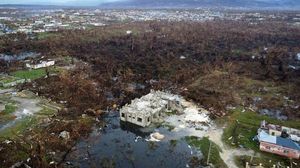U.S. Immigration and Customs Enforcement (ICE) has launched an unprecedented recruitment and expansion blitz across the nation, fueled by a tidal wave of funding and political urgency from the Trump administration. As the administration presses forward with its mass deportation agenda, the last three months have seen a flurry of television ads, multimillion-dollar contracts, and a scramble for detention space—yet the results on the ground reveal a system straining at its seams and struggling to keep pace with its own ambitions.
In mid-September 2025, ICE began airing a $5.7 million television advertising campaign in more than a dozen metropolitan areas, including Chicago, Seattle, Atlanta, Albuquerque, Boston, Denver, New York, Philadelphia, Sacramento, Washington, D.C., Dallas, El Paso, Houston, Miami, Salt Lake City, and San Antonio, according to the Associated Press. The ads, part of a $30 billion initiative to hire 10,000 new deportation officers by the end of the year, are targeted at local law enforcement officers—especially those frustrated by their cities' restrictions on immigration enforcement.
“You took an oath to protect and serve, to keep your family, your city, safe,” intones the narrator in the ad, as images of city skylines and ICE agents making arrests flash across the screen. “But in sanctuary cities, you’re ordered to stand down while dangerous illegals walk free.” The message is clear: join ICE and help “catch the worst of the worst—drug traffickers, gang members, predators.”
The campaign is bolstered by eye-popping incentives. ICE is offering bonuses of up to $50,000 and benefits like tuition reimbursement to lure new recruits. The administration’s July passage of the One Big Beautiful Bill Act did more than just greenlight a hiring spree; it allocated $45 billion to expand ICE’s detention system to more than 100,000 beds—a nearly threefold increase, as reported by The Atlantic. The total $76.5 billion budget sought for ICE represents a tenfold jump over previous funding levels.
But as the ads blitz the airwaves and the agency touts over 150,000 applications with 18,000 tentative job offers extended, the reality inside ICE’s detention network is far less glossy. Despite the influx of cash, ICE has added little to its detention capacity in the three months since the bill’s passage. Overcrowding and deteriorating conditions have become a flashpoint: lawmakers visiting a Baltimore center in August found detainees spending up to eight days in cells designed for 12-hour stays. In Georgia, Virginia, and California, attorneys reported immigrants sleeping on concrete floors without bedding or showers for days on end.
In New York City, a district court judge ordered immediate improvements at a federal processing center after videos surfaced showing packed holding cells and men sleeping beside toilets. “ICE has forced these detainees into facilities that are too small to accommodate the numbers, that never were intended to hold people overnight, that are unequipped to feed them properly, and that, more broadly, are not capable of housing the detainees in a humane manner,” wrote U.S. District Court Judge Lewis Kaplan in his September 17 ruling.
The numbers tell a story of a system hitting its limits. From January to June, the average number of detainees per day in ICE custody soared 43 percent, reaching more than 57,000. But since July, after the new funding was approved, the population has crept up just 5 percent, to roughly 60,000. Meanwhile, the number of monthly ICE arrests peaked at 31,590 in June but has dropped by about 11 percent since, according to ICE data cited by The Atlantic.
Behind the scenes, frustration is mounting within the administration. Eight current and former officials at ICE and the Department of Homeland Security (DHS) told The Atlantic that the expansion has been stymied by new contracting policies requiring DHS Secretary Kristi Noem’s sign-off on any contract over $100,000, with longtime Trump ally Corey Lewandowski acting as her gatekeeper. The result, insiders say, has been “chaos” and a bottleneck in bringing new detention facilities online—even as private prison companies like CoreCivic and Geo Group boast tens of thousands of available beds, including new contracts for a 2,560-bed site in California and a 1,033-bed facility in Kansas.
Instead, ICE has prioritized deals with state-run prisons with smaller capacities—such as Florida’s “Alligator Alcatraz” and the “Speedway Slammer” in Indiana. DHS spokesperson Tricia McLaughlin told The Atlantic that these contracts are more cost-effective and avoid long-term commitments to private companies, claiming $12 billion in taxpayer savings. But critics, including former ICE officials, argue that ICE has long had flexibility to terminate contracts and that the state-run deals often come with higher per-detainee costs—sometimes nearly double those of private facilities.
“There’s extreme frustration that the president’s agenda—when it comes to ICE beds, and therefore deportations—is not going to happen,” confided one former DHS official. Others suspect political motives, suggesting the state deals boost Noem’s profile among Republican governors. Lewandowski dismissed such claims as “absurd,” insisting the administration is simply seeking the best value for taxpayers.
As ICE’s expansion stalls, the agency has turned to creative—sometimes desperate—measures. The Department of Defense, now rebranded as the Department of War, signed a $1.26 billion contract for a 5,000-bed tent facility at Fort Bliss near El Paso. But this site, known as Camp East Montana, quickly racked up 60 violations in its first 50 days, including failures to monitor medical conditions and inadequate access to legal counsel, according to an internal ICE report cited by The Washington Post. Seventeen detainees died in ICE custody during the 2025 fiscal year, up from 12 the previous year, with most deaths linked to medical emergencies and at least three suicides.
Despite these challenges, the Trump administration has pressed on with its public messaging. Social media is awash with videos of masked agents raiding homes and businesses, and National Guard troops have been deployed to reinforce ICE teams in cities like Los Angeles, Washington, D.C., and Chicago. Yet, as Philadelphia police Capt. John Walker told the Associated Press, the ad blitz may be “more about reassuring viewers that the Trump administration was addressing illegal immigration” than actually recruiting significant numbers of officers. “It’s the psychological feel. You want to know that there are cops out there because it makes you feel good,” Walker said. “That’s all this is, strengthening the belief that they’re doing something.”
Local law enforcement agencies have been watching the recruitment campaign with a mix of skepticism and concern. Departments in Sacramento and Miami reported no noticeable loss of officers to ICE as of early October. In San Antonio, Police Officers Association President Danny Diaz worried the $50,000 signing bonus could lure away younger recruits, though he noted the uncertainty caused by the recent partial federal government shutdown might give some pause.
For now, ICE’s efforts have produced mixed results. The agency deported about 350,000 people during the 2025 fiscal year—the highest in a decade, but still well short of the administration’s stated goal of one million deportations per year. Meanwhile, the system’s growing pains are increasingly visible, both in the headlines and in the lived experiences of detainees and officers alike. The gap between political rhetoric and operational reality has rarely been so stark.
As the Trump administration’s immigration crackdown barrels forward, the coming months will test whether ICE can overcome its logistical bottlenecks, staffing shortages, and mounting legal challenges—or whether the limits of the system will force a reckoning with the scale and human cost of its ambitions.




